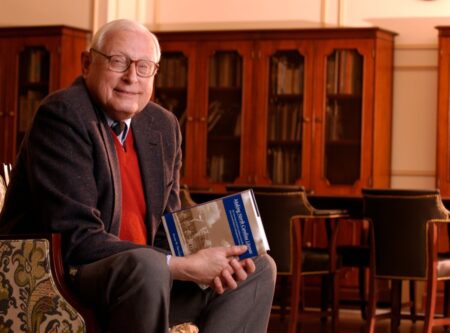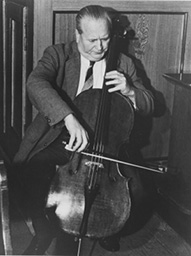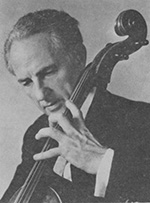by Emilie Mills
Thinking about the Special Collections Division as it was then known in the 1970s, I realize that is was the decade of “figuring it all out”. We had to bring together a variety of uncataloged book collections secured in a variety of locations (or, as it turned out, not so secure for some materials), and determine what should be organized, cataloged and preserved, and which should not, being that they were out-of-scope or duplicated at other nearby institutions. Limited space was an additional concern. There was no public catalog access for manuscripts or University Archives materials.
By the 1980s we had settled comfortably into our more spacious surroundings on the second floor of the main Library – and more visible to library patrons. Our first long-time researcher-in-residence was history professor Allen Trelease who wrote THE history of UNCG. He was followed by Margery Enix, a cellist and music professor from California, who was researching the life and work of cellist Rudolf Matz whose papers and scores are part of our large cello music Collections/ The Randall Jarrell manuscript collection also received heavy use to the point where microfilming became a must. Our mantra during the ‘80s and the decade following was, to paraphrase, “Catalog it and they will come.”

Cooperative collection development was a touted concept among institutions as budgets tightened. An award-winning article on the subject was published by a UNC Chapel Hill graduate student who interviewed librarians across the state. This and other efforts such as preservation and conservation activities increased during the later 20th century. UNCG was especially fortunate when a world renown book and paper conservator, Don Etherington, moved to Greensboro in 1987 to set up a conservation lab at Southeast Library Bindery just west from campus off of Walker Avenue. Don has been one of a team to rescue and treat books damaged by great Florence flood in 1966. Prior to coming to Greensboro he had worked at the Library of Congress conservation department and had set up the conservation lab at the Harry Ransom Humanities Research Center at the University of Texas.
The 1980s also brought the unique bookwork of Amos P. Kennedy, Jr. who simply appeared in my office one day unannounced to show me his efforts in bookmaking and asking if I thought he was “on the right track”. I was immediately charmed by the man and his diminutive “books” and purchased several items that day. We placed his work on standing order. Over the years Amos and I became great friends and have kept in touch with calls and (too infrequent) visits. For the growing book arts collections, Amos was the first Negro (the term he prefers to Black) maker of unique “books” to be added to Special Collections. Google his name and be enchanted, amazed, and grateful for his important messaging and artistic work. I am so proud that UNCG was his first repository. Link to Artist’s Books Research Guide
The 1980s also brought Betty Carter back to us after a hiatus of several years with her family in South Carolina. We were ecstatic about her return and after many years she was recognized as our first full-time University Archivist. Betty and I compiled “A Guide to Records Management” in 1987. (Betty did most of the work!) Betty’s death this past year was a great, sad loss to all who knew and loved her.
The decade of the 1990s also saw a good deal of growth. A large collection of detective fiction and mysteries from the estate of Robbie Dunn Siske given by her sister, Eleanor Dunn Lloyd was added to the Women’s Detective Fiction collection started in earlier years as an adjunct to the larger Woman’s Collection of books by, about and of interest to women. Gertrude Stein is among the several Famous authors whose Blood on the Dining Room Floor is included.
Cello music collections also grew including those of Janos Scholz with whom Yo-Yo Ma studied and Maurice Eisenberg who was a close friend of Pablo Casals. Scholz was also knowledgeable about the history of papermaking and visited that part of our collection during one of his visits. I had secretly hoped his collection on that subject would find its way here.


Renovations to the main library in the mid-90s necessitated our wrapping the entire Special Collections and Archives stacks in plastic sheeting making the retrieving of items especially awkward, but it was ultimately for the betterment of our environmental quality. Our amazing staff took the inconveniences in stride with grace and humor. I can never say enough about all of the wonderful people who worked with me.
Throughout the 1990s my own activities included many hours of committee work within the University and beyond. My favorite “gig” was being on the North Carolina Preservation Consortium in its early years and collaborating with professors with presentations about the world of rare books, demonstrations to students on our Washington handpress, and videotaping talks on conservation and preservation for the Library Science Department.
In the spring of 1997, I wrote my final Report to the Friends of the Library and attended my last Friends’ dinner as Special Collections Librarian. When introduced to John Hope Franklin, the dinner speaker that evening, he said, “Oh, YOU’RE the one who’s quitting!” We laughed.
I could have said more, but instead leave the rest of the story to my successor, Bill Finley, who managed to flesh our so many areas that further distinguish our collections.